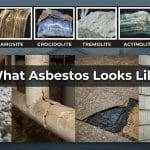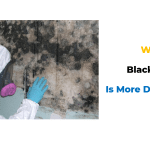The discovery of asbestos in your property inevitably leads to a critical question after its removal: “How long until it’s truly safe to return?“ Professional asbestos removal is essential, but the process doesn’t end when the crew leaves. Ensuring your environment is free from harmful asbestos fibers requires a meticulous verification process. This guide will clarify the factors determining post-removal safety, the typical timeline for re-entry, and the crucial steps to guarantee your peace of mind.
Understanding Asbestos and Its Removal
Asbestos, a group of naturally occurring fibrous minerals, was once widely used for its heat resistance and strength. However, disturbing asbestos-containing materials (ACMs) releases microscopic fibers that, when inhaled, can lead to severe diseases like mesothelioma, asbestosis, and lung cancer.
Professional asbestos removal is paramount due to these risks. Certified abatement teams use specialized procedures, including negative pressure enclosures and HEPA-filtered vacuums, to safely contain, remove, and dispose of asbestos. Attempting DIY removal is both dangerous and often illegal, as it significantly increases the risk of fiber release and widespread contamination.
Key Factors for Post-Removal Safety
Several factors dictate when an area is safe after asbestos removal:
- Asbestos Type: Friable asbestos (e.g., pipe insulation) crumbles easily, releasing fibers readily, making its removal and cleanup more complex. Non-friable asbestos (e.g., floor tiles) is less likely to release fibers unless severely damaged.
- Project Scope: A small repair will have a shorter verification period than a large-scale abatement involving extensive friable material.
- Air Quality Testing & Clearance Certification: These are the definitive indicators of safety. Independent third-party tests measure airborne fiber concentrations to ensure they’re below safe limits.
- Ventilation & Containment: Proper measures during removal prevent fiber spread to uncontaminated areas.
- Post-Removal Cleaning: Thorough follow-up cleaning, including HEPA vacuuming and wet wiping, is essential to remove any residual dust.
Timeline for Safe Re-Entry
The timeline for safe re-entry is primarily determined by the successful completion of stringent air quality tests and the issuance of a clearance certificate.
Once physical removal and initial cleaning are complete, an independent third party will conduct air monitoring. If fiber counts fall below established safe limits, a clearance certificate is issued. This process typically takes 24 to 72 hours after the completion of the physical work, though it can vary.
Larger, more complex projects or those involving extensive friable material may require more comprehensive cleaning and multiple rounds of testing, potentially extending the waiting period. Re-entry should never occur until a formal clearance certificate is obtained.
Why Waiting Is Crucial for Safety
It’s tempting to re-enter your property immediately after visible asbestos is gone, but this is a critical mistake. Microscopic asbestos fibers can remain suspended in the air or settle on surfaces, even after the bulk material is removed. These invisible fibers pose the same severe health hazards as those present before removal.
Clearance certifications are not just paperwork; they are indispensable safety documents. Issued by an independent, qualified professional after comprehensive air quality testing, they are the only definitive proof that the air in the remediated area is safe to breathe. Re-entering a space without this certification risks inhaling residual fibers, negating the entire purpose of professional abatement.
Signs You Are Safe to Re-enter
The only reliable sign that it’s safe to re-enter your property after asbestos removal is the receipt of a formal clearance certificate. This document is issued by an independent, accredited asbestos hygienist or consultant, not the abatement company.
Before issuing the certificate, the hygienist will:
- Visually inspect the remediated area to ensure all asbestos-containing materials are gone and there’s no visible dust or debris.
- Conduct air quality tests by collecting air samples from various locations. These samples are analyzed in a laboratory to confirm that airborne asbestos fiber concentrations are below strict regulatory limits.
Only when these conditions are met and the certificate is issued is the property confirmed safe for re-entry. Never re-enter until you have this official documentation.
Conclusion
Ensuring safety after asbestos removal involves more than just physical removal; it requires a meticulous verification process to guarantee the absence of airborne fibers. Your re-entry timeline is determined by the type and scope of the removal, the thoroughness of the cleanup, and, most importantly, the successful completion of independent air quality testing resulting in a clearance certificate.
Premature re-entry poses significant health risks from lingering microscopic fibers, making the waiting period, validated by professional inspection and certification, absolutely crucial. The definitive sign you are safe to re-enter is the issuance of this clearance certificate by a qualified third-party hygienist, confirming all safety thresholds have been met.
For your well-being and peace of mind, always prioritize professional asbestos abatement and never re-enter a remediated area without official clearance. If you suspect asbestos in your property, contact a certified professional today to ensure safe and effective removal.
We recommend contacting Synchron Demolition for professional asbestos removal services.




